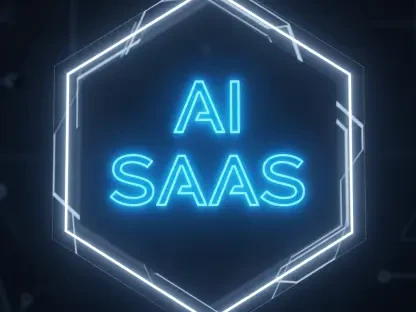As businesses embrace software-as-a-service (SaaS) solutions, they find themselves at a crossroads between increasing confidence in security measures and the persistent threat of data breaches. Despite a high level of confidence in SaaS data protection capabilities, many companies continue to experience security incidents, highlighting a mismatch between perceived security strength and actual performance. This scenario poses a pressing question: can artificial intelligence (AI) be the bridge to fortifying the security of SaaS platforms, ultimately closing the confidence gap?
Current State of the SaaS Security Industry
The SaaS security landscape is characterized by rapid development aimed at countering sophisticated cyber threats. With numerous key technological influences and players shaping the industry, organizations rely on SaaS providers’ assurances when it comes to data security. However, a reliance on external assurances rather than robust internal security measures reveals a vulnerability that is becoming alarmingly prevalent. Compliance with regulations and standards further complicates the landscape, mandating adherence to specific guidelines, which vary by region and industry. This highlights the regulatory pressures companies face in adequately securing SaaS environments.
Industry Dynamics and Innovations
Primary Trends and Emerging Technologies
The industry is witnessing significant shifts due to emerging technologies and evolving consumer behavior. AI has emerged as a dominant factor, expected to transform how organizations approach cybersecurity. As AI integrates more closely with enterprise data, the threats it may pose could parallel those made by human actions. This development necessitates implementing AI governance practices similar to identity frameworks. There is also a notable shift in consumer demand, with businesses prioritizing threat detection, SaaS app inventory management, and the identification of unauthorized connections. Such trends are increasingly driving the demand for sophisticated protective strategies.
Market Data and Forecasts
Recent market data indicates that although a significant portion of organizations utilizes dedicated SaaS security solutions, others opt for broader platforms. The projections suggest continued growth in the adoption of SaaS security measures as businesses navigate security challenges, increasing their cybersecurity budgets correspondingly. An outlook focusing on the next few years posits further innovation and technological integration as companies aim to enhance platform coverage while ensuring critical applications receive deep protection. This ongoing evolution underscores organizations’ commitment to staying ahead in the cybersecurity race.
Challenges and Strategic Solutions
The juxtaposition of technological, regulatory, and market-driven challenges presents an intricate puzzle for the SaaS security landscape. One of the core challenges lies in organizations failing to fully grasp the nuances of SaaS-specific risks, often relying on suboptimal tools. Strategic solutions emphasize proactive configuration management and real-time monitoring to address this gap effectively. Transitioning from periodic audits to continuous monitoring and reinforcing the clarity of SaaS security ownership can provide robust defenses against emerging threats. These approaches necessitate a dynamic, intelligence-driven philosophy as companies prepare to navigate increasingly complex SaaS environments.
Regulatory Landscape and Compliance
Navigating the regulatory landscape presents an additional layer of complexity for SaaS security. Significant laws and standards demand organizations implement stringent security practices, constantly adapting to changes in regulations to stay compliant. These shifts influence SaaS security practices by mandating businesses remain vigilant and responsive to new legal requirements. As regulations evolve, companies must adopt increasingly strategic approaches to ensure their security measures align with both industry norms and legal expectations, effectively safeguarding their SaaS platforms from potential breaches and non-compliance penalties.
Future of SaaS Security Industry
The future of SaaS security is poised to be shaped by emerging technologies and potential market disruptors. AI’s influence as a cybersecurity tool suggests a move towards more sophisticated security models. As consumer preferences evolve, businesses must focus on areas that promise growth, such as advancing threat detection capabilities and hybrid security models. These avenues for exploration provide a roadmap for future advancements in SaaS protection. Increased investment in strategic areas can position organizations to better defend against dynamic security threats and capitalize on new technological opportunities.
Conclusion and Recommendations
The findings reveal a gap between SaaS security confidence and actual incident experience, urging a reevaluation of current strategies to bridge this divide effectively. Recommendations for future investment focus on dynamic approaches, possibly involving a shift towards hybrid security models. Incorporating AI governance within identity frameworks, emphasizing continuous monitoring, and supplementing broader security solutions with dedicated SSPM tools are essential steps forward. The future of SaaS security will hinge on organizations prioritizing strategic growth areas and adapting to new technologies, ensuring a robust defense against evolving cybersecurity challenges.









